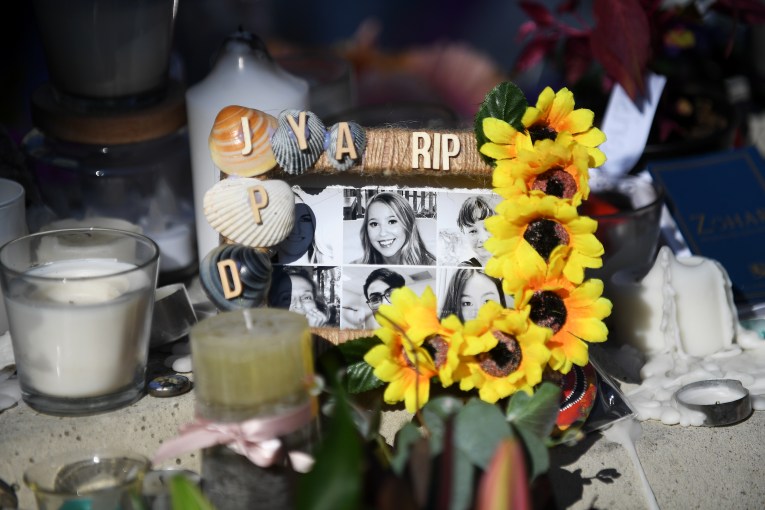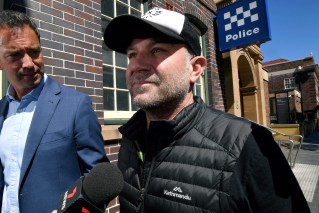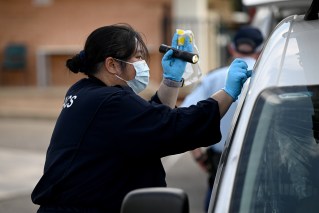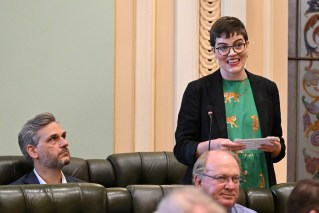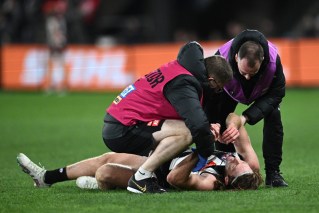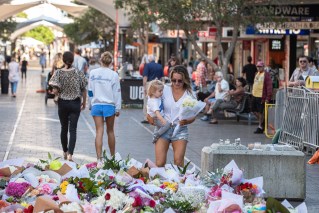Crunch time: Vaccination expert warns plan to get back to normal not tough enough
As Prime Minister Scott Morrison pushes the States to open up once vaccination coverage hits 70-80 per cent, one expert warns it won’t be enough to avoid strict lockdowns.
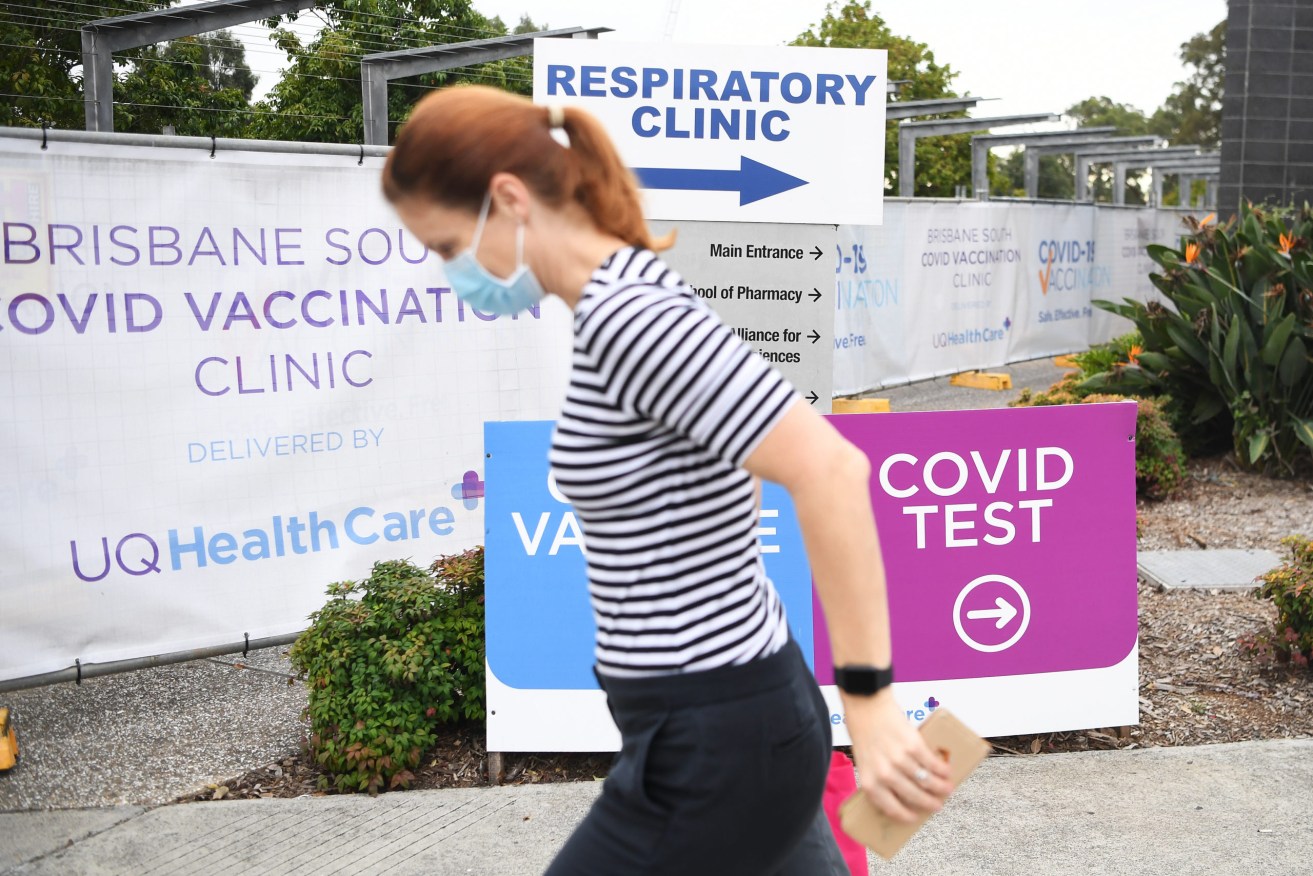
The entrance to a Covid-19 testing and vaccination clinic in Brisbane. (AAP Image/Dan Peled)
Morrison, together with NSW Premier Gladys Berejiklian, is urging the States not to back away from a plan that would see restrictions and lockdowns become a last resort once 70-80 per cent of the eligible population is vaccinated.
The plan is based on modelling conducted by the Doherty Institute, whose director, Professor Sharon Lewin, last night reiterated that Australia could start to reopen when those thresholds are reached.
With Berejiklian repeatedly saying the nation will need to “learn to live with the virus,” Lewin has said that some public health measures will be required but that Australia does not need to enter the new phase of freedom from a position of zero cases.
Professor George Milne from the University of Western Australia has provided advice to both the WA and Queensland governments throughout the pandemic, and examined outbreaks in several jurisdictions.
Milne is part of a group of infectious disease modelling experts that wants the Doherty Institute to release more of its working out to allow greater scrutiny of its predictions.
“As a modeller, I haven’t been able to see how they’ve done the modelling,” Milne told InQueensland today.
“I’ve no idea how they’ve derived these numbers. So, from my point of view, these numbers that they’re quoting really aren’t defensible.”
Milne said that if the aim was to avoid the need for stage four lockdowns, and still keep schools open, the vaccination strategy would need to be much broader: the 80 per cent target should include adolescents, and with booster shots given to everyone given AstraZeneca.
“Even then, it’s highly likely we’ll still need lockdown measures to contain the outbreak so the health system doesn’t get overwhelmed,” Milne said, suggesting jurisdictions could “probably get away with moderate lockdowns and allow schools to remain open.”
Lewin said the Doherty Institute looked at vaccinating adolescents – something Morrison is now discussing with the States, pending expert advice – but found it would not greatly alter the predictions in the modelling.
Milne’s work focusses on the transmission of disease, including the highly contagious Delta variant of COVID-19. He was highly critical of NSW, and previously Victoria, for being too slow to impose tough lockdowns, and said booster shots were required for maximum protection.
Even after looking at 20-30 different scenarios, Milne was loathe to even predict case numbers of his version of 80 per cent, saying it depended on the starting point. If NSW was still reporting high case numbers, and the health system was under pressure, then both case numbers and deaths would likely be higher. He questioned whether the community would support such an outcome.
In any event, Milne said Australia remained constrained by a lack of Pfizer vaccines, and questioned whether authorities should have pushed for people to have a first dose of AstraZeneca, followed by a Pfizer dose, in order to make protection available faster.
“And I don’t think everything will be hunky dory with 80 per cent of adults vaccinated anyway,” Milne said of the plan.
The danger, Milne said, was that in seeking to avoid tough public health measures, the virus could spread faster, and further, overwhelming the health system and leading to avoidable deaths.
Queensland Premier Annastacia Palaszczuk today said she wanted to see more than 80 per cent of her state vaccinated, and believed a key threshold should be the point at which vaccines are made available to all eligible Australians.
With outbreaks forcing other states and territories into lockdown, Palaszczuk said nobody wanted their government to give up on containment.
“Have a look out in Queensland at the moment,” Palaszczuk said.
“You can go to work, you can go to school, you can go watch sport, you can go play community sport, you can go to a restaurant, you can go out. We haven’t given up.”
Palaszczuk would not speculate on the implications of reaching 70 per cent and 80 per cent vaccination coverage until she had read updated modelling from the Doherty Institute.
Milne said it was “naïve” for the Commonwealth – which has previously funded UWA modelling on influenza – to rely solely on the Doherty Institute, and without making more of its data, assumptions and calculations available for public scrutiny.
Morrison is expected to provide more information from the Doherty Institute to National Cabinet on Friday.
“In the UK, the government engaged with the three main modelling groups who are working independently – well established groups, with good track records, who feed into decision-making,” Milne said.
Palaszczuk said Queensland’s performance was a demonstration of what governments had to achieve in working hard to prevent, and contain, COVID-19.
